World On Fire

CHAPTER 1 - WHAT IS HAPPENING?
There is a book that came out in 2019 entitled The Uninhabitable Earth, Life After Warming, by David Wallace-Wells. The first line of the book is “It is worse, much worse, than you think."
So what do you think is going on? Since the beginning of the Industrial Revolution, around 1750, when humans started burning a lot of fossil fuels, the Earth has warmed about 1 degree Centigrade, 1.8 degrees Fahrenheit. The picture changes almost every year: 2014 was the hottest year ever up to that time, then 2015 was the hottest year, followed by 2016 being the hottest year ever, and so on. The decade that just ended was the hottest ever.
This information comes, very simply, from temperature readings that have been taken all over the world since 1880.
This much of an increase in temperature does not sound like much, but keep in mind that this is an average temperature increase for the whole Earth. Temperature increases are higher on land than in the oceans; the increase on land can be as much as 6 degrees Centigrade, 10 degrees Fahrenheit. The rise in temperature is greater in the Northern Hemisphere where there is more land.
What’s worse than we think is that in the last 30 years the world has pumped as much carbon dioxide (CO2) into the atmosphere as has been emitted in all of previous human history.
The concentration of carbon dioxide in the atmosphere has risen from about 250 parts per million (ppm) in 1750 to its present level of 410 parts per million, and it is rising at the rate of about 2 ppm per year.
And the worst news is that the amount of CO2 being emitted keeps increasing. In 2018 it actually increased by 2.7 percent, despite efforts to use more alternative methods of producing energy. A goal of some climate scientists is to limit the concentration of CO2 to 500 ppm, which means really changing our ways, and that level would be reached in less than 50 years. It is believed that 500 ppm would mean a warming of about 2 degrees Celsius.
The world is on track to warm by 1.5 degrees Centigrade, 2.7 degrees Fahrenheit. That much of an increase is almost certain and will probably happen within 30 years. It means that the effects of global warming that we already see will be at least 50% worse. Two degrees of warming by the end of the century is also very likely unless a great deal of action is taken soon.
Another question about the Earth’s warming is: how much has the Earth warmed in the last hundreds and thousands of years? There are several ways that the history of climate can be learned. The ice over Greenland and Antarctica is thousands of years old; snow that falls there does not melt, until recently. There are air bubbles trapped inside the ice and by measuring the concentrations of the different isotopes (forms) of oxygen scientists can learn the history of the climate and the levels of carbon dioxide in the air in the past. Sediments in lakes and rings in trees also reveal information about climate history.
The answer is that the Earth is warmer now than it has been for at least 115,000 years; at that time the oceans were between 20 and 30 feet higher than they are today. There is no doubt that the Earth is warming.
When will the warming end? Will it reach 2 degrees Centigrade or even higher by the end of the century or shortly thereafter? No one knows since no one knows when humanity will wake up and take action to stop emitting more carbon dioxide than the Earth can absorb. That is a political problem not a technological problem.
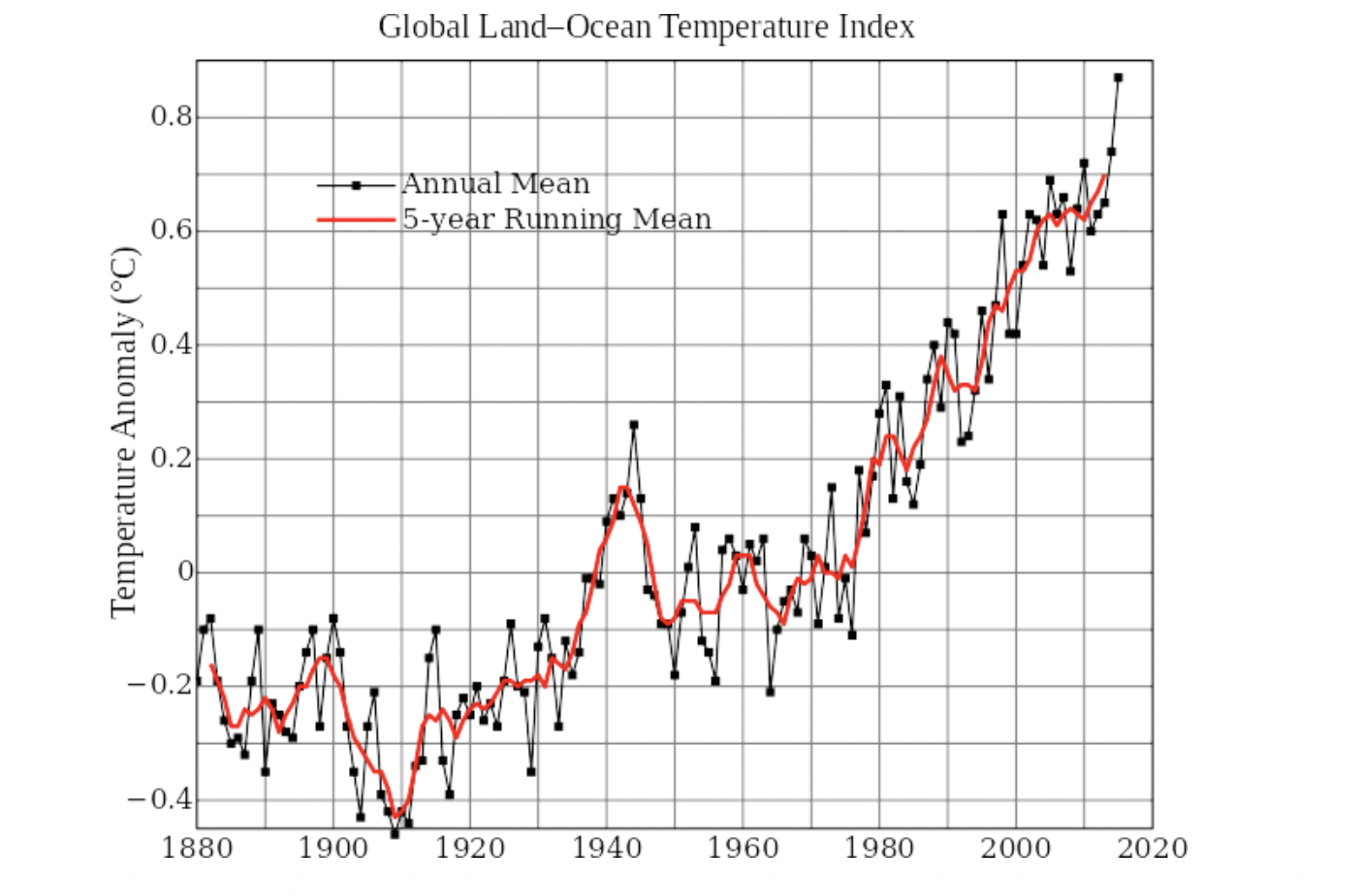
Figure 1 - Temperature anomaly since 1880 (difference between temperature at year indicated and temperature in 1940), showing a rise of slightly over 1 degree Celsius though 2015.
CHAPTER 2 - WHY IS THE EARTH WARMING?
The short answer is: the greenhouse effect. Here’s how that works: The Sun’s rays, which include infrared light, are radiated into space and and hit the Earth. It is the infrared light, which we cannot see, which warms the planet. The surface of the Earth radiates some of that infrared light, as heat, outward towards space and some of that is captured by the atoms of certain gases. Those gases then re-radiate some of the infrared light as heat back to Earth, warming us. It is different from a blanket, which insulates but does not radiate heat.
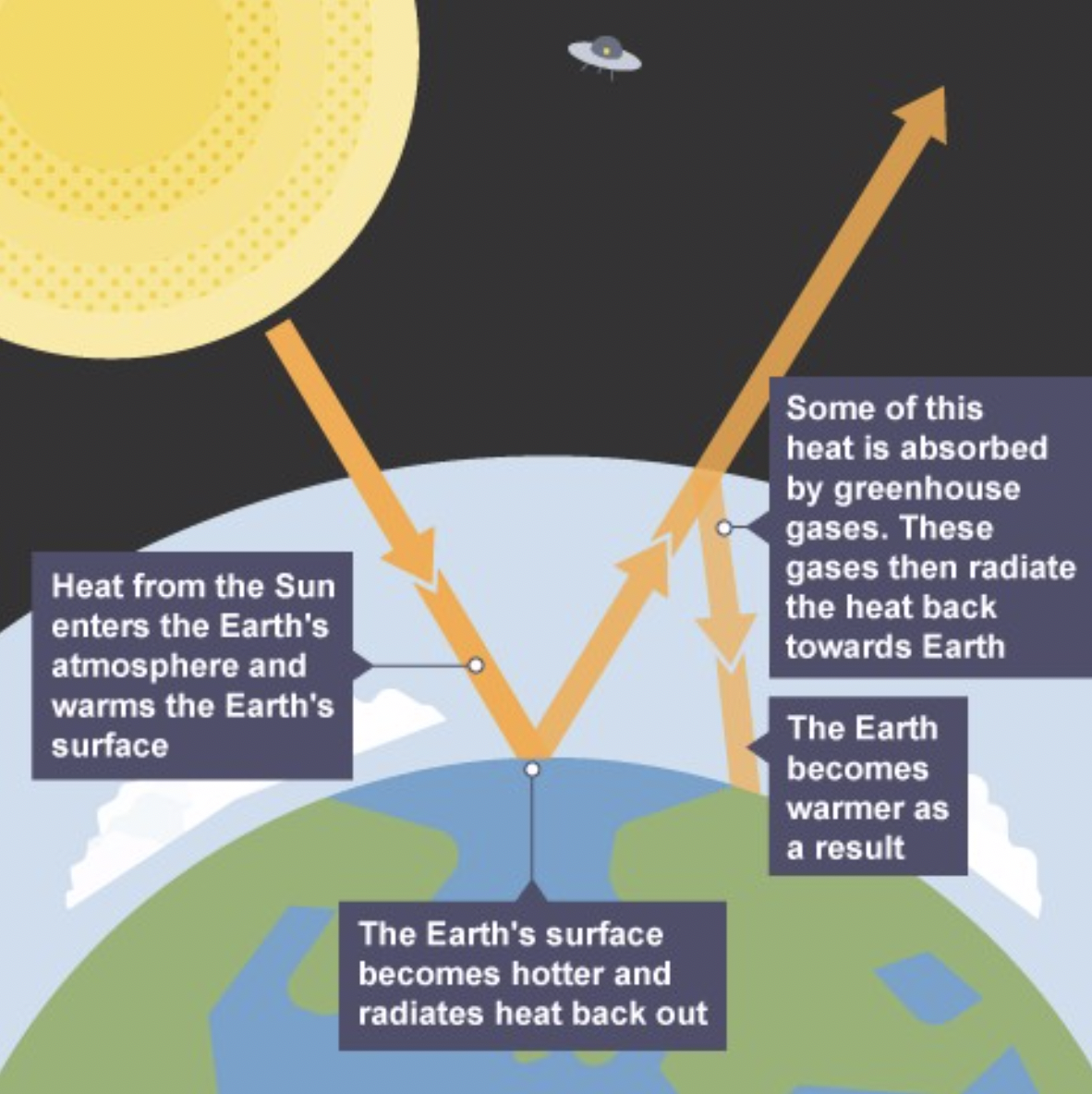
Figure 2 - How The Greenhouse Effect Works
Only certain gases in our atmosphere capture infra red radiation and re-radiate it back to Earth. These gases have come to be known as greenhouse gases; they are carbon dioxide (CO2), methane (CH4), and nitrous oxide (N2O). The chart in Figure 3 shows the concentrations of the greenhouse gases in our atmosphere. As you can see, by far the most significant gas is carbon dioxide. However, methane is a more potent greenhouse gas, by some estimates 46 times more potent, and so it is important too.
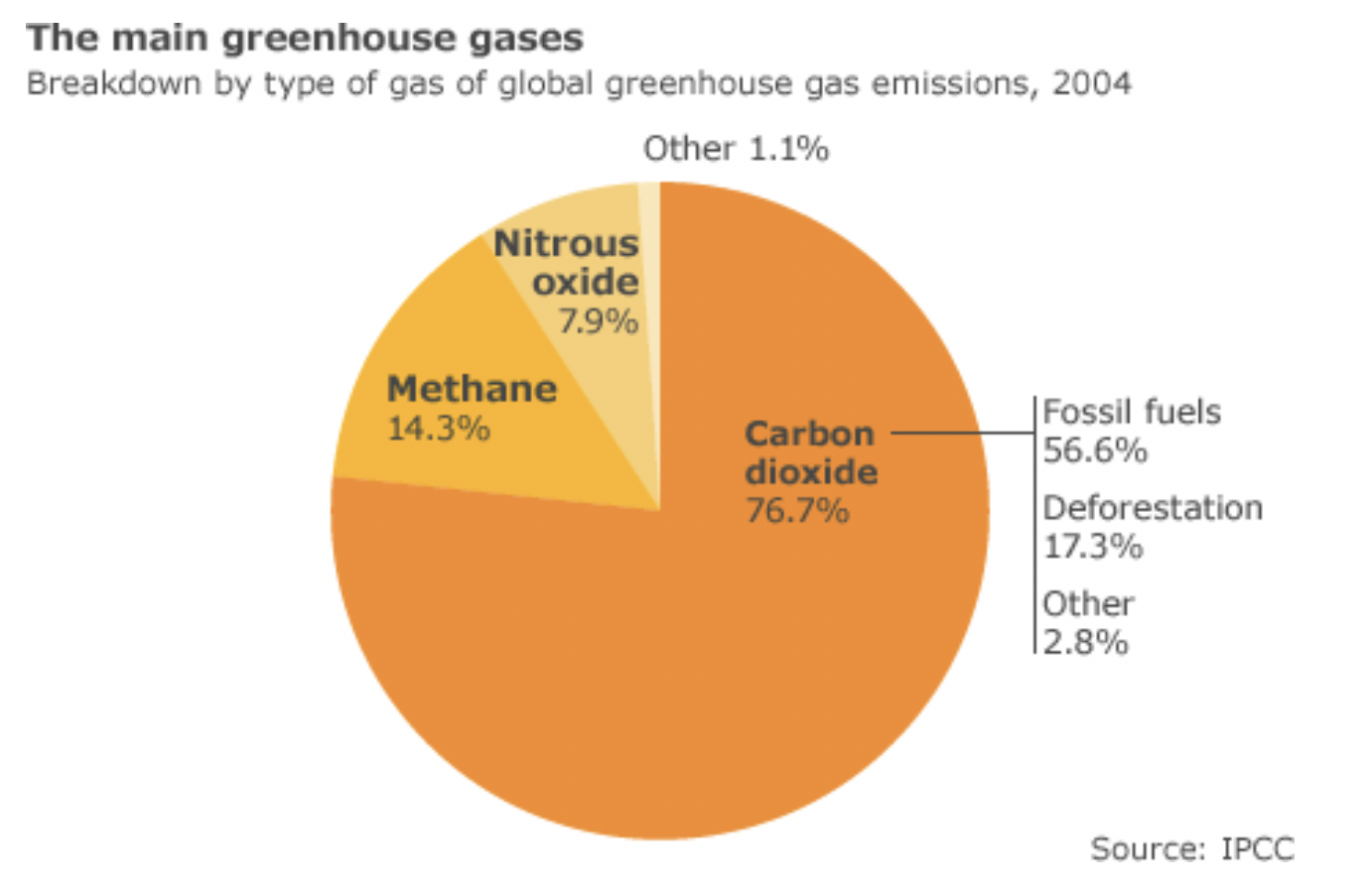
Figure 3 - The Concentrations of the Greenhouse Gases
Oxygen, which exists as O2 in our atmosphere, and nitrogen, which exists as N2, do not trap infrared light and so do not cause us a problem. Molecules in the air with 3 or more atoms are the ones that trap infrared light and re-radiate it, and methane, with 5 atoms, is the worst.
The greenhouse effect is necessary to life on Earth. Without any greenhouse gases re-radiating heat back to Earth, the average temperature of our planet would be about 0 degrees Fahrenheit, which is about 60 degrees colder than the present average temperature. This is too cold for liquid water and therefore too cold for life.
So the Earth is warming year by year due to the increase in the concentration of greenhouse gases, mainly carbon dioxide, in the atmosphere that comes mostly from the human activity of burning fossil fuels. Figures 4 and 5 show how the warming of the Earth is very directly related to the amount of carbon dioxide in the atmosphere. Figure 4 goes back to 1880 and Figure 5 goes back about 1,000 years.
Methane, CH4, is also making the problem worse. It comes partly from gases produced by cows as they digest the grasses they eat. One of the many steps that can be taken to combat global warming is to reduce the amount of beef we eat.
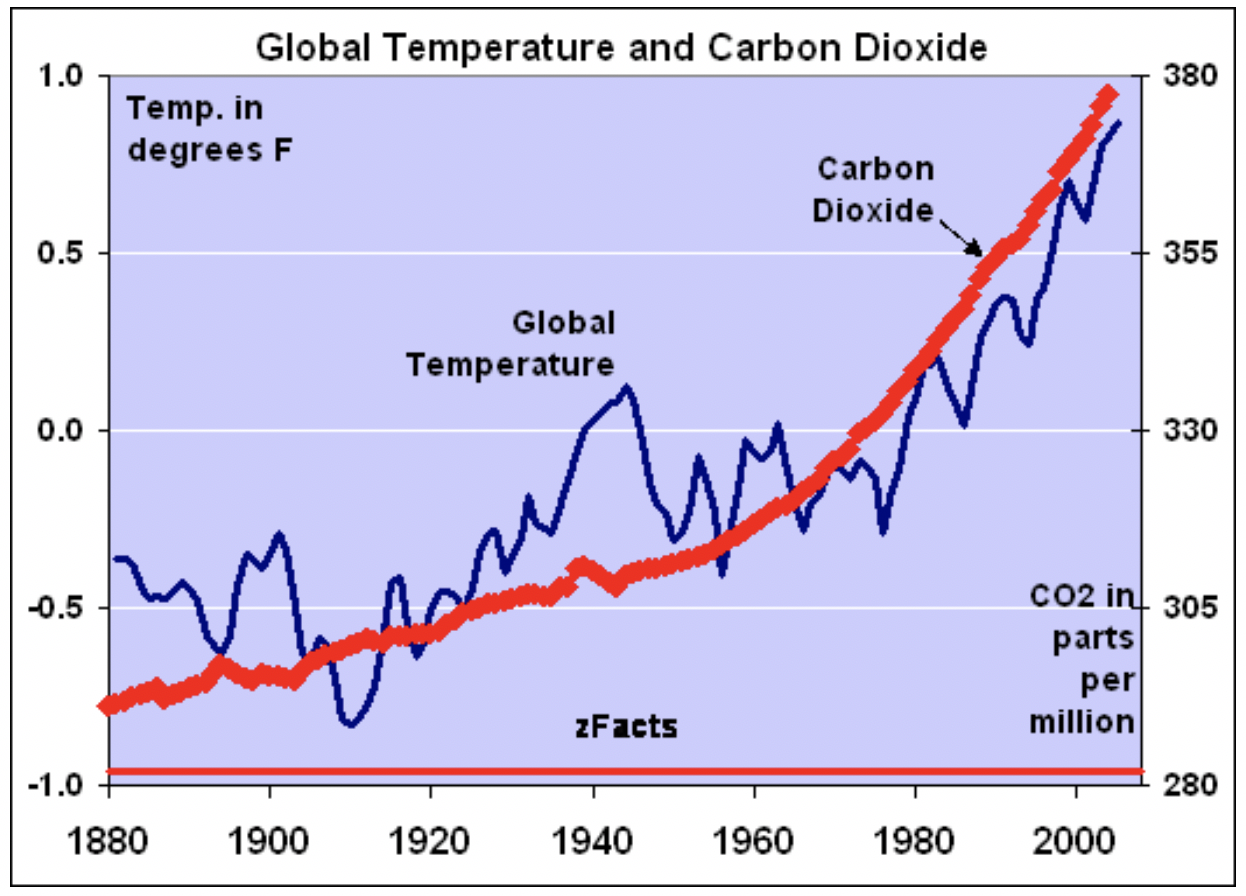
Figure 4 - Graph showing that the temperature varies with the amount of carbon dioxide in the air, from 1880 to the present. The blue line is carbon dioxide concentration.
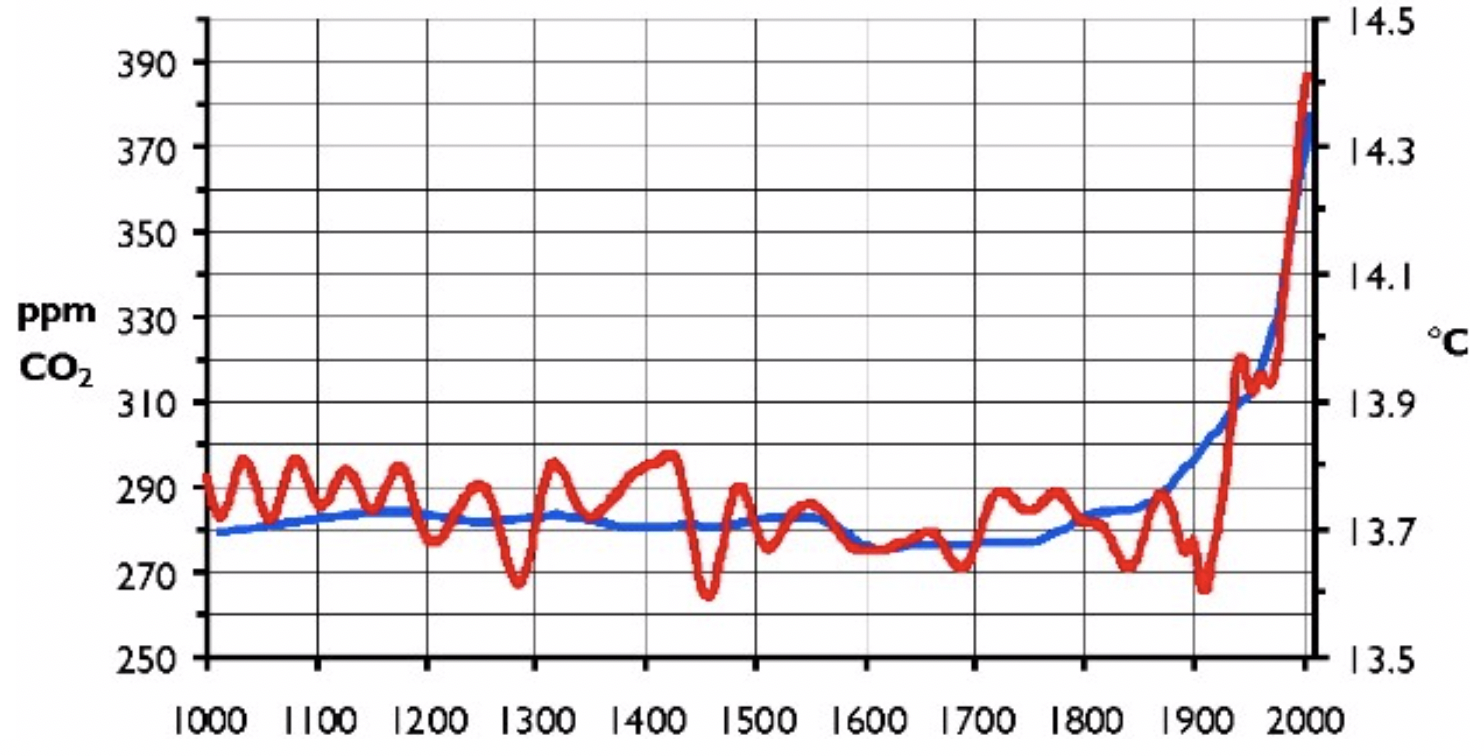
Figure 5 - Graph showing the relationship of temperature to carbon dioxide content of the atmosphere since 1000. The red line is carbon dioxide concentration.
Another source of methane is the melting of the permafrost in the Arctic. Plants that lived and died a long time ago became buried under other plants just below the surface of the Earth in the arctic. The plants froze and became what is called permafrost, because they never melted.
Until now, when it is beginning to melt. The permafrost extends an average of about 12 feet below the Earth’s surface and covers a vast area in Northern Canada, Russia and Scandinavia. Scientists believe that an enormous amount of methane is trapped in the permafrost and when it melts its release into the atmosphere will worsen global warming. It could cause the 2 degree threshold to be reached earlier than 50 years from now; how much earlier, no one knows.
Methane is found in the earth and it is used as a fossil fuel; more on this later. Another source of methane in the atmosphere is leakage from the mining process. The industry claims that very little leakage occurs; many climate scientists disagree and say that the leakage is another reason that the Earth is warming. The Obama administration enacted regulations that would have forced the industry to reduce methane leakage into the atmosphere; the Trump administration revoked those regulations.
There is a lot of variation from country to country in the amount of emissions that contribute to global warming. The term used to describe how much we emit is “carbon footprint”. The U.S. and China are the worst, with by far the largest carbon footprints. The U.S. footprint from combustion is 15% of the world’s total, even though we have only 4.35% of the world’s population. China is much worse, with 28% of the world’s total, but of course it has more than 4 times as many people, and it has a history of being very poor until recently. Per person, we are the worst in the world.
Underdeveloped nations, such as several in sub-Saharan Africa, have very small carbon footprints. More than one billion people in the world do not have access to electricity, many do not have cars, and many have no need for home heating since they live in a warm climate.
Some other countries have small carbon footprints because they have non-fossil fuel based energy sources. France gets 75% of its electricity from nuclear power; Brazil has a highly developed hydroelectric power system and uses biomass to power automobiles (more on these later). Europe as a whole uses about half as much fossil fuel per capita as the United States, partly because their public transportation systems are better and partly because they charge much more for gasoline so people drive less.
The part of the world that is experiencing warming the most is the Arctic, where the sea ice is melting. Each year the amount of ice in the summer is less than the previous year. This worsens global warming because the whiteness of ice is very reflective, which lessens the warming process, and so less ice means less reflection of the sun’s rays. The reflectivity of the Earth is called its albedo.
A more obscure, but very important cause of global warming is a group of chemicals called hydrofluorocarbons (HFCs for short). These are chemicals that are used in air conditioners and refrigerators. They replaced chlorofluorocarbons (CFCs), which were banned by a worldwide treaty in 1987, because CFCs removed ozone (O3) from the atmosphere. Ozone blocks ultra violet (UV) light from reaching the Earth, which is important because UV light causes cancer and kills small plants and animals called plankton, which are important for fish.
Although there is not much HFC in the atmosphere, its importance lies in the fact that it is 1,000 times more potent than carbon dioxide in acting as a heat trapping gas.
The good news is that on October 14, 2016 170 nations reached agreement to phase out HFC’s. The agreement is in the form of an amendment to the 1987 treaty on CFC’s and so it has the force of law. The HFC agreement means that all countries signing on are legally obligated to comply and will be penalized if they don't. The phaseout is over time, with richer countries reducing their use sooner and poorer countries later. The bad news is that there are recent reports that China is cheating and a company is manufacturing CFC’s there.
This is very important. Scientists estimate that phasing out CFC’s is equivalent to the reduction of the equivalent of 70 billion tons of carbon dioxide from the atmosphere — about two times the carbon pollution produced annually by the entire world. In terms of temperature reduction, it is estimated to prevent 1 degree Fahrenheit of warming.
The compulsory aspect of the HFC agreement is unlike the Paris Accord of December, 2015, which provides for voluntary, non-binding efforts to reduce emissions. The goal of the Paris Accord is to limit global warming to 2 degrees Centigrade, and to pursue efforts to limit the warming to 1.5 degrees C. The latter goal is obviously impossible to reach since the world is already close to that level of warming. Thus far 192 countries have signed on. It is the world’s first comprehensive climate agreement. However, now, two years later, it is clear that the voluntary commitments that many countries made then are not being complied with. The Trump administration is withdrawing the U.S. from the Paris Accord and, rather than reducing emissions, it has passed regulations to increase emissions.
Deforestation, the wholesale cutting down of trees in order to obtain land suitable for crops, is another significant cause of global warming. More on that in the next chapter.
So the answer to the question raised in the beginning of this chapter is that the Earth is warming for several reasons, by far the most significant one being the release of carbon dioxide into the atmosphere caused by the burning of fossil fuels.
CHAPTER 3 - THE EFFECTS OF GLOBAL WARMING
Spoiler alert: this is a depressing chapter. But there is cause for optimism later on.
The problem with predicting the effects of global warming is that the warming caused by increased carbon dioxide in the atmosphere has never happened before in human history. So there is little to go on in making predictions. Also, no one knows when the world will wake up and reduce carbon dioxide emissions and so no one knows what the future concentration of greenhouse gases will be and therefore what the temperature will be then.
There are major unknowns, such as the amount of methane that will be released by the melting of the permafrost. Some of the effects are depicted in Figures 6 and 7.
A - The Oceans
Ocean rise. One reason the oceans are rising is because land based ice is melting. Glaciers all over the world are shrinking. Glacier National Park in Montana is forecast to be without glaciers by 2030. The huge ice sheets in Greenland and Antarctica are melting rapidly and the rate of melting is increasing. All of this is easy to see.
The arctic ice shrinks every year and the forecast is that in 10 to 30 years there will be no arctic ice in summer. This melting does not raise the level of the oceans since arctic ice is floating. You can observe this by putting an ice cube in water and you will see that when the ice melts the water level does not rise.
The other reason the oceans are rising is thermal expansion. When the temperature of almost any object increases its molecules move faster, bump into each other more strongly, push each other apart more vigorously, and this causes the object to expand. This is happening to the oceans. In the last century the oceans have risen between 5 and 8 inches; the amount of rising varies with the location.
Predictions of future sea level rise range from a low of 1 to 3 feet to as much as 80 feet. The reason the predictions are so varied is that there are major unknowns: large portions of the Greenland ice sheet may slide suddenly into the ocean, and a huge block of ice in West Antarctica, also melting rapidly, may also fall into the ocean. The other unknown, of course, is when the carbon dioxide content in the air will stop increasing.
The worst case scenario will cause major tsunamis (huge, destructive waves) and will make many coastal cities and areas all over the world uninhabitable. Even the lower estimates of ocean rise will cause a lot of ocean front land to be lost. The estimates of the number of people whose homes will be lost ranges from 200 million to one billion. When such great numbers of people are forced to move inland, to land that is already inhabited, the results are almost too horrible to imagine: homelessness, famine and starvation, warfare, tens or hundreds of millions of deaths. Nothing like this has ever happened before in human history so it is impossible to make even remotely accurate predictions.
Pacific Island nations are the most vulnerable. As the oceans rise many will simply disappear. The Marshall Islands, with 70,000 inhabitants is among those places.
An Alaskan village named Shishmaref, on a barrier island, recently voted to relocate their village to higher ground. Twelve other villages in Alaska also decided to relocate; 19 others, which have not yet decided what to do, are threatened by rising waters. These villages have been inhabited for over 400 years. The federal government recently relocated the entire town of Isle de Jean Charles, Louisiana.
Bangladesh is the most worrisome. It is very densely populated, very poor and flat. The country’s climate scientists predict that by 2050 rising sea levels will inundate 17 percent of the land and displace 18 million people. As an underdeveloped nation, Bangladesh has contributed almost nothing to global warming. Their leaders have demanded that the polluting nations compensate Bangladeshis, even by allowing them to move to the United States. Not likely.
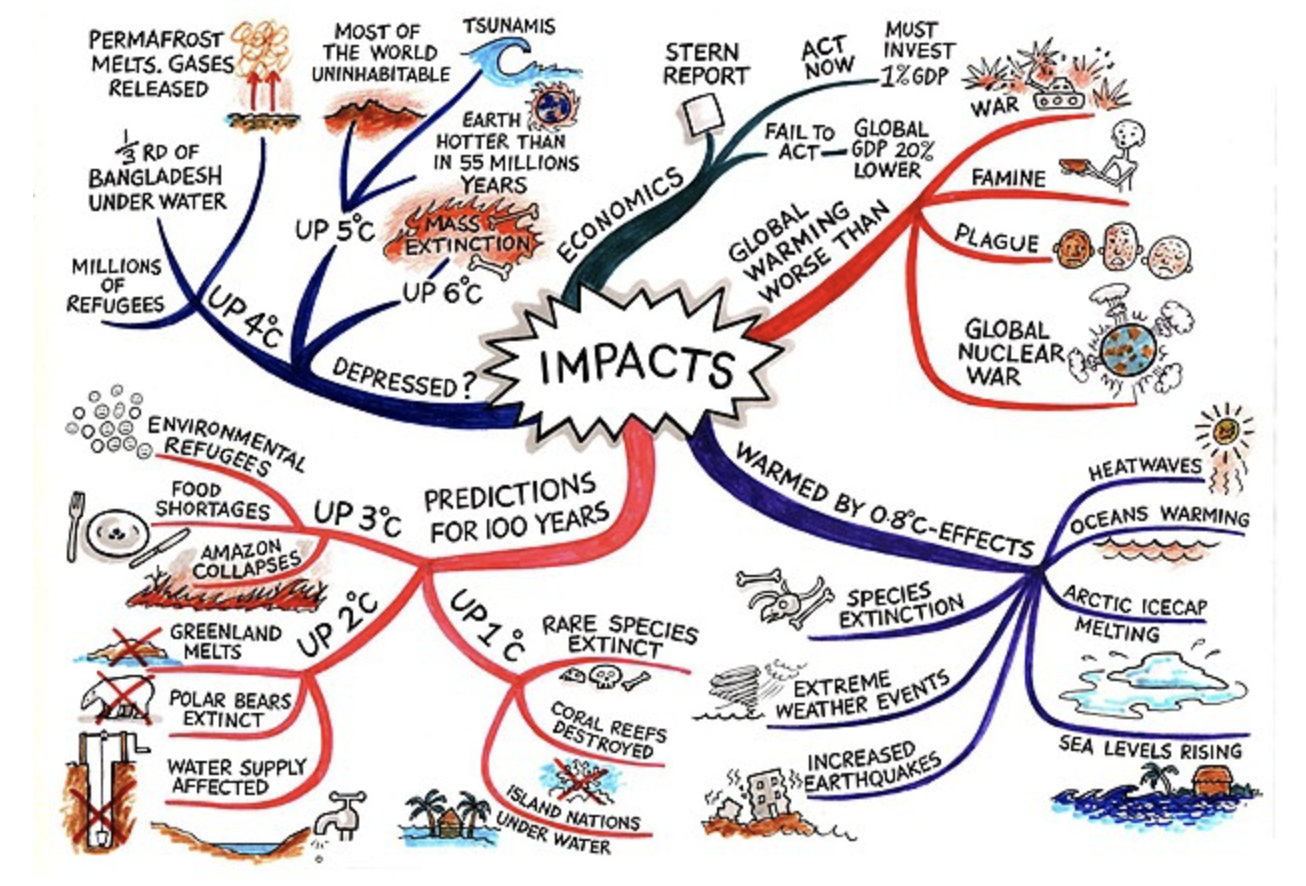
Figure 6 - Some Effects of Global Warming
Acidification. The other major calamity that is happening to the oceans is that they are becoming more acidic. When carbon dioxide dissolves in water, carbonic acid is formed; the chemical reaction is CO2+ H2O == H2CO3. This has caused coral reefs all over the world to blanch (whiten) and about half have already died. About one quarter of world’s fish use the coral reefs as spawning grounds and without the coral reefs they will die off. An estimated one billion people depend on fish from coral reefs for their protein.
Ocean current disruption.The ocean currents, which bring warmth from the tropics to Northern areas, may be disrupted by global warming. This has not happened yet but scientists believe that it is a possibility. The Gulf Stream warms Northern Europe and if it ceases to run or is diverted, Northern Europe will become very cold and will not be able to support the agriculture that is necessary to feed its people. Some areas will become surrounded by ice and since they depend on ocean shipping and fishing for survival, they will become uninhabitable.
Iceland is particularly threatened by this possibility.
Some populations of fish have been moving North to escape the warming seas, which disrupts fisheries. Lobsters that were caught for many years off the coast of Massachusetts are now found off the coast of Maine.
B - On Land
There are many effects of global warming, and more are discovered all the time. Only a portion of them can be addressed here. As with the oceans, the effects on land depend on when greenhouse gas emissions are reduced to the level that the Earth can absorb.
Flooding. Global warming causes more water to be evaporated from the oceans and therefore more rain is falling worldwide. In some areas this is causing severe flooding. In 2015 there was flooding in England at levels that were not expected to happen more often than every 200 years. In 2019 Midwestern states in the U.S. experienced flooding that broke records in some states. These are just examples of flooding; floods are happening all over the world to an extent never before seen in history.
Droughts. At the same time, weather patterns are changing and other areas are affected by severe droughts. This is happening in the Southwestern United States, in sub-Saharan Africa and in China. Some land that formerly could be farmed is becoming desert, permanently; this is called desertification.
Famines. Both floods and droughts make farming impossible and scientists fear that, with the Earth’s population expected to reach 9 billion by the end of the 21st century, famines will be inevitable .
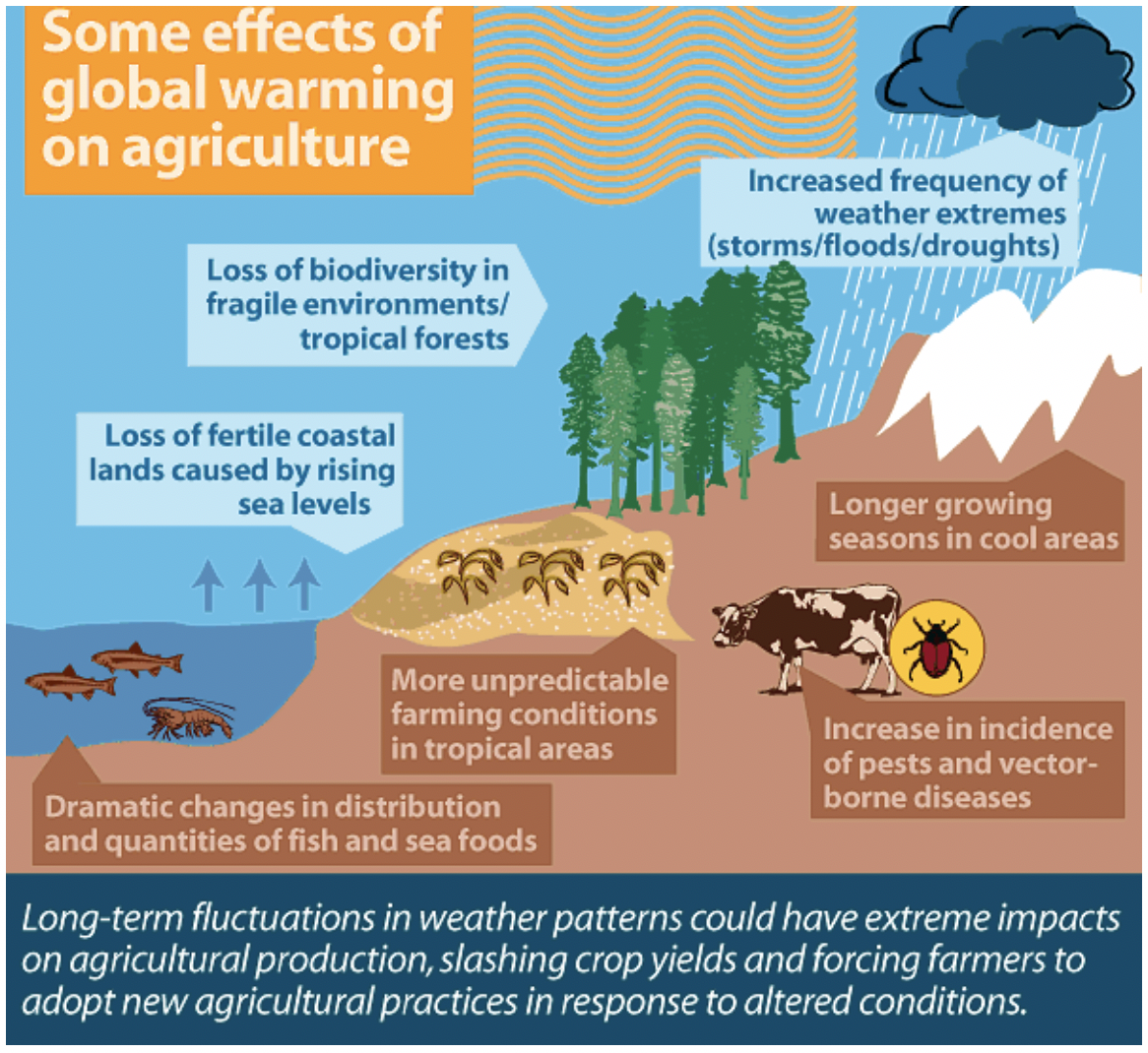
Figure 7 - Some Effects of Global Warming on Land
Lake Poopo was once Bolivia’s second largest lake. Many Uru-Murato people lived off its waters for generations but now it is a dry, salty expanse. The fish died, the birds that ate the fish left, and most of the people who lived there also left.
Extinctions. In the history of the Earth there have always been extinctions. It has been estimated that 99% of the species that have lived on our planet since it formed 4.5 billion years ago have become extinct. However, extinctions are occurring now at a much faster rate than ever before. According to a United Nations agency (the Intergovernmental Science-Policy Platform on Biodiversity and Ecosystem Services, IPBES), one million of the planet’s eight million species are threatened with extinction by human activity. This forecast comes from 145 scientists from 50 countries.
What does this mean for humanity? In addition to a world that is less diverse and less interesting, many medicines come from plants. Some doctors have already expressed the view that as antibiotics lose their effectiveness due to overuse and the evolution of viruses, humanity will have to turn more to naturally occurring substances. Extinctions caused by global warming will make such substances scarcer.
Diseases spreading. Tropical diseases, such as malaria, West Nile Virus,and Zika will move north. Since there are already about one million deaths annually from malaria, this is a serious problem. Tropical insects have moved north and so it is likely that tropical diseases will be spread by those insects. Lyme disease is now more common in Europe. Some topical diseases have actually been found close to the arctic.
Storms. Hurricanes, tornadoes, cyclones and other severe weather phenomena have already become worse and will become even more damaging in the future. Flooding, deaths, and billions of dollars in property damage have already been experienced in the United States.
Hurricane Katrina killed over 2,000 people and caused an estimated $125 billion of damage, and hurricane Sandy (which was really a storm by the time it reached land) killed 233 people and caused $75 billion of damage. These storms are spawned over the ocean and there is no doubt that global warming makes them worse.
Fires. Forest fires have become much more extensive due to global warming. According to the National Interagency Fire Center, the amount of acreage burned in the U.S. in recent years is about double the amount burned in the 1980’s. The Camp Fire in November, 2018 destroyed the town of Paradise, California where 26,000 people lived.
So what can we conclude about the effects of global warming? In the best case scenario, with global warming limited to two degrees Celsius, we will experience more of what we are presently experiencing: more extinctions, more intense storms, worse droughts, worse flooding, declines in fisheries, loss of coastal land due to rising oceans, all to unknown extents.
In the worst case scenario, with no action being taken to combat global warming, with temperatures rising 4 degrees Celsius, 7 degrees Fahrenheit and more, the consequences for humanity are unimaginably terrible: massive loss of land due to ocean levels rising, huge coastal areas including many heavily populated cities becoming uninhabitable, terrible famines, warfare between groups competing for habitable and arable land, diseases that overwhelm healthcare systems, extremely severe storms, huge numbers of homelessness and deaths, and consequences that we cannot even contemplate.
